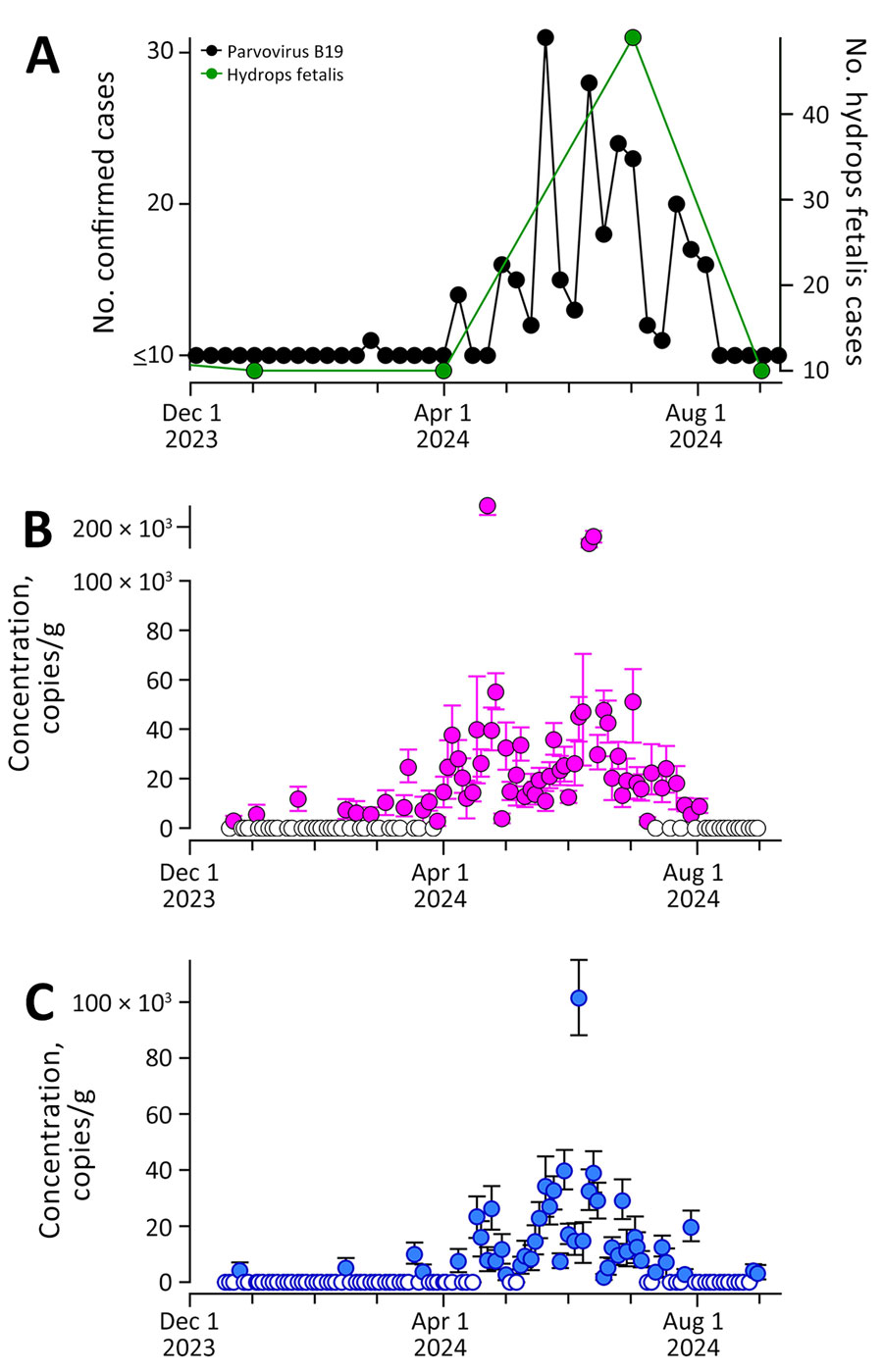Volume 31, Number 7—July 2025
Dispatch
Community Infections Linked with Parvovirus B19 Genomic DNA in Wastewater, Texas, USA, 2023–2024
Figure

Figure. Comparison of case reports and wastewater surveillance reports from study of community infections linked with parvovirus B19 genomic DNA in wastewater, Montgomery County, Texas, USA, 2023–2024. A) Numbers of confirmed parvovirus infections and hydrops fetalis logged into Epic Cosmos (https://cosmos.epic.com) for the county. Data on fetal hydrops were provided quarterly; parvovirus infection data were provided weekly. Scales for the y-axes differ substantially to underscore patterns but do not permit direct comparisons. B, C) Concentrations of parvovirus B19 DNA in wastewater solids (in units of copies/gram of dry weight) at WWTP186 (B) and WWTP187 (C). Solid circles indicate parvovirus B19 was detected, open circles that it was not detected; error bars indicate SDs. Note the broken y-axis in panel B. For the case and syndromic data, numbers ≤10 are redacted and reported as 10. Kendall tau between weekly cases and wastewater concentrations for WWTP186 was 0.56 and between weekly cases and wastewater concentrations for WWTP187 was 0.52 (p<0.0001). WWTP, wastewater treatment plant.